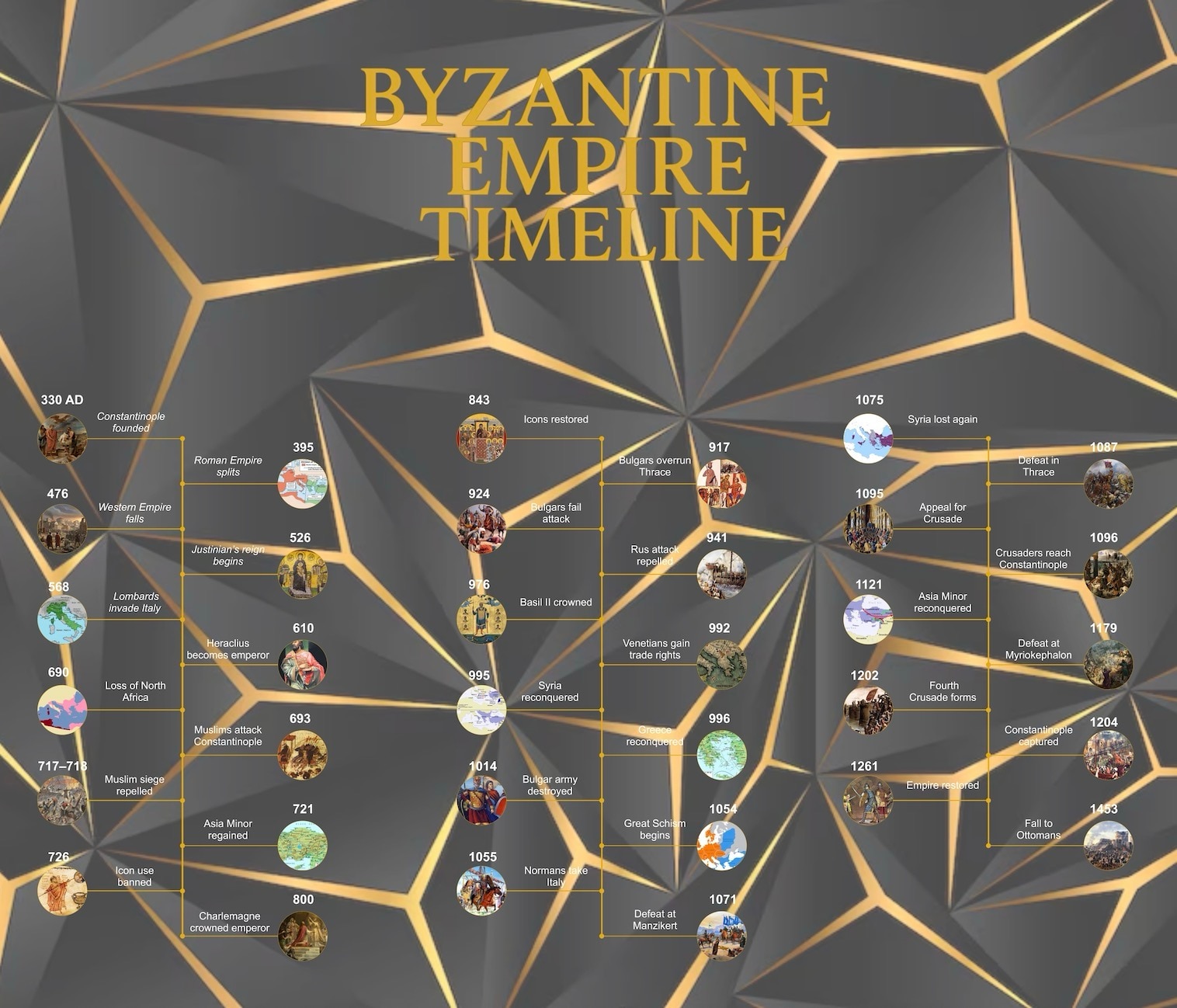In the many chapters of history, the Byzantine Empire is one of the most prominent. It was a massive empire born from the eastern half of the Roman world. And to everyone’s surprise, it survived a thousand years past the West’s fall.
Soon, it became a place where old Roman traditions mixed with new ideas. And where trade, religion, and politics were deeply connected. The Byzantine Empire was a bridge between ancient and Medieval times.
It was an era of strong rulers and significant transformations. And how can we forget its architectural history, like the Hagia Sophia? Let’s walk through those years, no.. centuries.
In this article
Byzantine Empire Timeline
330 AD
In 330 AD, Emperor Constantine took a bold decision to move the Roman capital east to Byzantium. He renamed it Constantinople. Many didn’t understand his decision to shift the empire eastward, uprooting generations of Roman tradition. Yet he did it. Because he believed a new capital closer to the new opportunities of the East would last, and he was right.
395 AD
Just 65 years later, in 395 AD, the Roman Empire officially split into East and West. This happened under the rule of Theodosius I’s sons. The Eastern half, centered in Constantinople, morphed into what we now call the Byzantine Empire. This was a whole new identity. Eastern leaders had to reimagine what it meant to be Roman. As the Eastern Empire thrived, the Western half? Not so much. And spoiler alert: it wouldn’t last long.
476 AD
The Western Empire finally fell in 476 AD when Romulus Augustulus was deposed. But Constantinople? It didn’t just survive – it thrived. Under Emperor Zeno and his successors, it became the guardian of Roman traditions for almost another thousand years.
526 AD
In 526, Justinian I ascended the throne. He wasn’t content with just holding ground. He wanted glory. He reclaimed Africa, Spain, and Italy, which were parts of the fallen Western Empire. He also reorganized Roman law into one document. And built the Hagia Sophia, rising over the city like a promise. During his reign, Constantinople swelled to half a million. Becoming one of the most glorious cities of Europe at the time.
568 AD
In 568 AD, the Lombards invaded Italy, shattering Byzantine control in the region. Justinian’s hard-won gains began slipping away. But Constantinople’s grip on the Mediterranean remained strong… for now. The empire was still wealthy, urban, and heavily fortified, a glittering rival to any kingdom in Europe.
610 – 693 AD
In 610 AD, Heraclius rose to power, replacing the unpopular Phocas. And he meant business. As soon as he was on the throne, he reorganized the empire’s administration and army. Even introducing Greek as the official language.
However, his reign wasn’t peaceful for long. By 690 AD, the Byzantines lost North Africa to Arab forces, severing a crucial grain supply. Then, in 693 AD, Muslim armies started to attack Constantinople itself.
717–718 AD
Between 717–718 AD, the empire faced another massive Muslim siege. The attack was done through both land and sea routes. Again, Constantinople held firm. Partly thanks to freezing winters and relentless naval defenses. And partly because of its legendary walls and the infamous Greek fire. Still, the Islamic Caliphate had become the empire’s greatest rival. And obviously, this wasn’t good.
721–726 AD
Come 726 AD, Emperor Leo III banned the use of icons. Icons, in simpler terms, were images of sacred figures and events. This sparked the Iconoclast Controversy. Religious art was destroyed, and debates raged between iconoclasts and iconophiles.
Not to forget that by 721 AD, Asia Minor was briefly regained from Arab control. However, tensions with the Caliphate and internally over icons would dominate this century.
800–924 AD
In 800 AD, over in the West, Charlemagne was crowned emperor by the Pope. The Byzantines weren’t thrilled. And how could they be? After all, they considered themselves the rightful Roman heirs.
By 843 AD, icons were officially restored to churches under Empress Theodora. This was the end of the first wave of iconoclasm. Images of saints and Christware were back in churches. But trouble never stayed far. In 917 AD, the Bulgars overran Thrace, pushing deep into Byzantine territory. By 924 AD, they launched yet another attack, keeping the Balkan territories weak.
941–995 AD
Now, even the Russians attacked Constantinople. Sailing down the Black Sea in a bold raid. But the Byzantine navy’s Greek fire sent them fleeing. In 976 AD, Basil II overtook the throne. Beginning a reign that would see the empire reach its medieval peak. By 992 AD, Venice secured exclusive trade rights with Byzantium. It was a small deal at the time, but one that would have big consequences later. In 995 AD, Basil II reconquered Syria, pushing the empire’s borders eastward again. And by 996 AD, he had regained Greece as well from the Balkans.
1041–1071 AD
The early 1000s saw continued military success. In 1014 AD, Basil II destroyed the Bulgarian army. Earning the nickname “Bulgar Slayer” – pretty grim if you ask me. By 1054 AD, though, the Christian Church split in the Great Schism. Dividing into the Roman Catholic and Eastern Orthodox branches.
The Normans invaded Italy in 1055 AD, while in 1071 AD, the Byzantines suffered a crushing defeat at Manzikert. Losing much of Anatolia to the Seljuk Turks. The empire was now in serious trouble.
1075–1179 AD
By 1075 AD, Syria was lost again to Muslim forces. In 1087 AD, Byzantium faced defeat in Thrace. In 1095 AD, Emperor Alexios I made a desperate appeal to the Pope for military aid. This kicked off the First Crusade. By 1096 AD, Crusader armies reached Constantinople. The Byzantines regained Asia Minor in 1121 AD. But in 1179 AD, they were badly defeated at Myriokephalon by the Seljuks, ending hopes of fully restoring Anatolia.
1202–1261 AD
In 1202, the Fourth Crusade was launched, but it took a disastrous turn. By 1204 AD, Crusaders sacked Constantinople itself, looting treasures and toppling the Byzantine government. The empire splintered into small successor states. It was a brutal betrayal that shattered the empire forever.
In 1261 AD, the Empire of Nicaea finally reclaimed the city. Restoring the empire. Constantinople rose again, but it was a shadow of its former self – poorer, smaller, and surrounded by enemies.
1453 AD
The Ottomans closed in throughout the 1400s. In 1453 AD, after a massive siege, Sultan Mehmed II’s forces breached Constantinople’s walls. The last Byzantine emperor, Constantine XI, died defending the city. With the fall of Constantinople, the Byzantine Empire’s thousand-year legacy came to an end. And the Ottoman Empire rose as the new power in the eastern Mediterranean.
How to Make a Similar Timeline in EdrawMax?
The Byzantine Empire was a long era. That alone shows the resilience of its people. Surviving for more than a millennium after the Fall of Rome is no joke. And how can we forget the tremendous cultural influence of Byzantine libraries? They’re the sole reason we still have ancient Greek history, philosophy, and drama.
And if you’re also looking to preserve what you’ve learnt about the Byzantine Empire. Look no further. Timelines can be a great help in that. And what better place to make timelines than EdrawMax? Whether you’re a first-time user or a seasoned timeliner. It caters to everyone’s needs.
Better get to it... Shall we?
Step1
Install EdrawMax on your device. Sign up or log in to get started.

Step2
Create a Timeline from Scratch To create a new timeline,simply head to Basic Diagram on the homepage. From there,Timeline > Blank Drawing. Start working on the canvas. Alternatively,select a pre-made template from the Templates library.
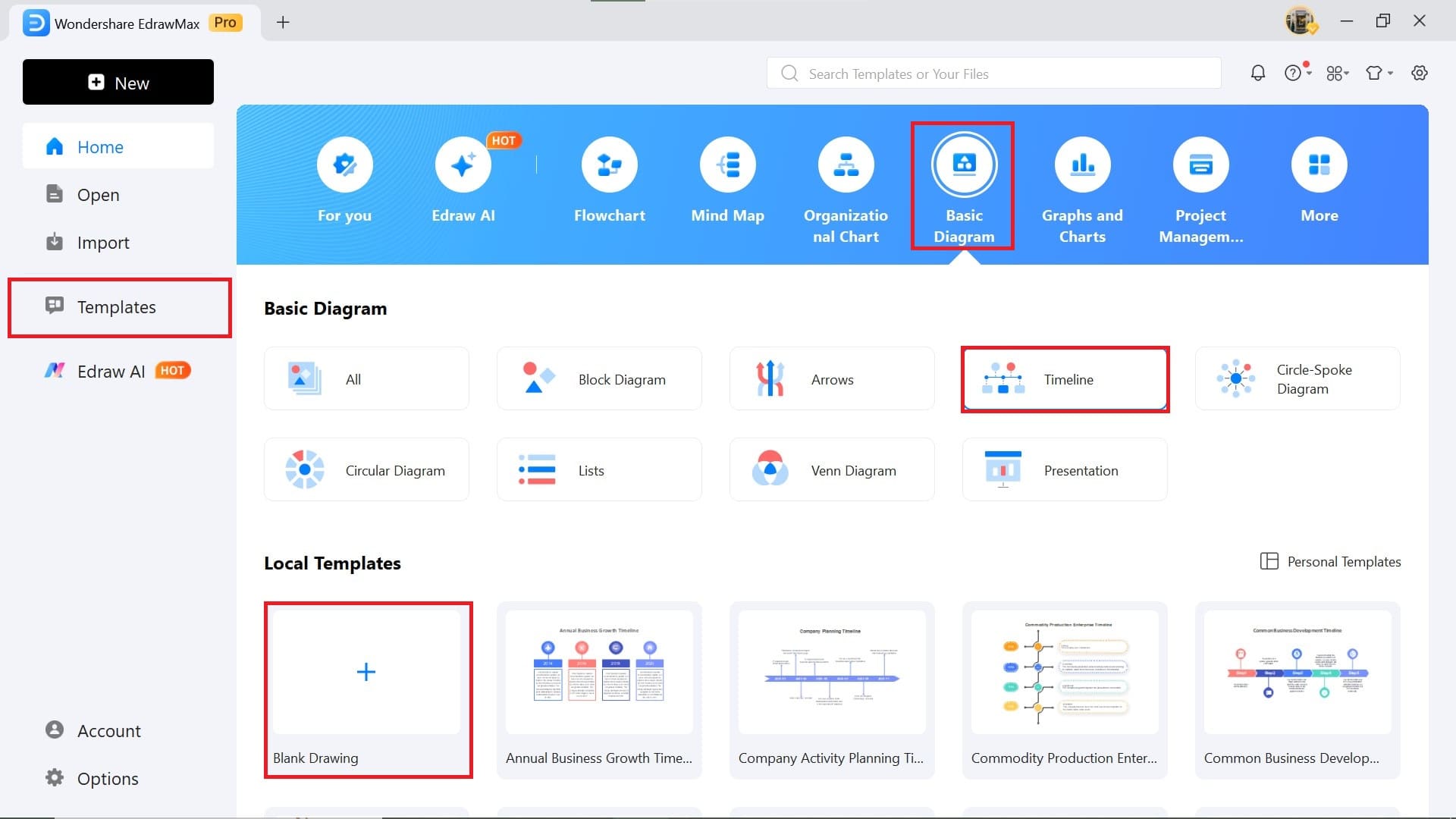
Step3
Start Building the Timeline Go to the Symbols section on the left-hand panel. Select a timeline layout that fits your needs. In this case,you’ll need to drag and drop it thrice. Once on the canvas,click the timeline. A floating panel will appear with editing options. Numbers will help you add or lessen the connectors. Through Picture Size,you can customize the size of the image frame. Use Horizontal Interval to adjust the distance between the main event and its subtopics. Do it separately for each layout.
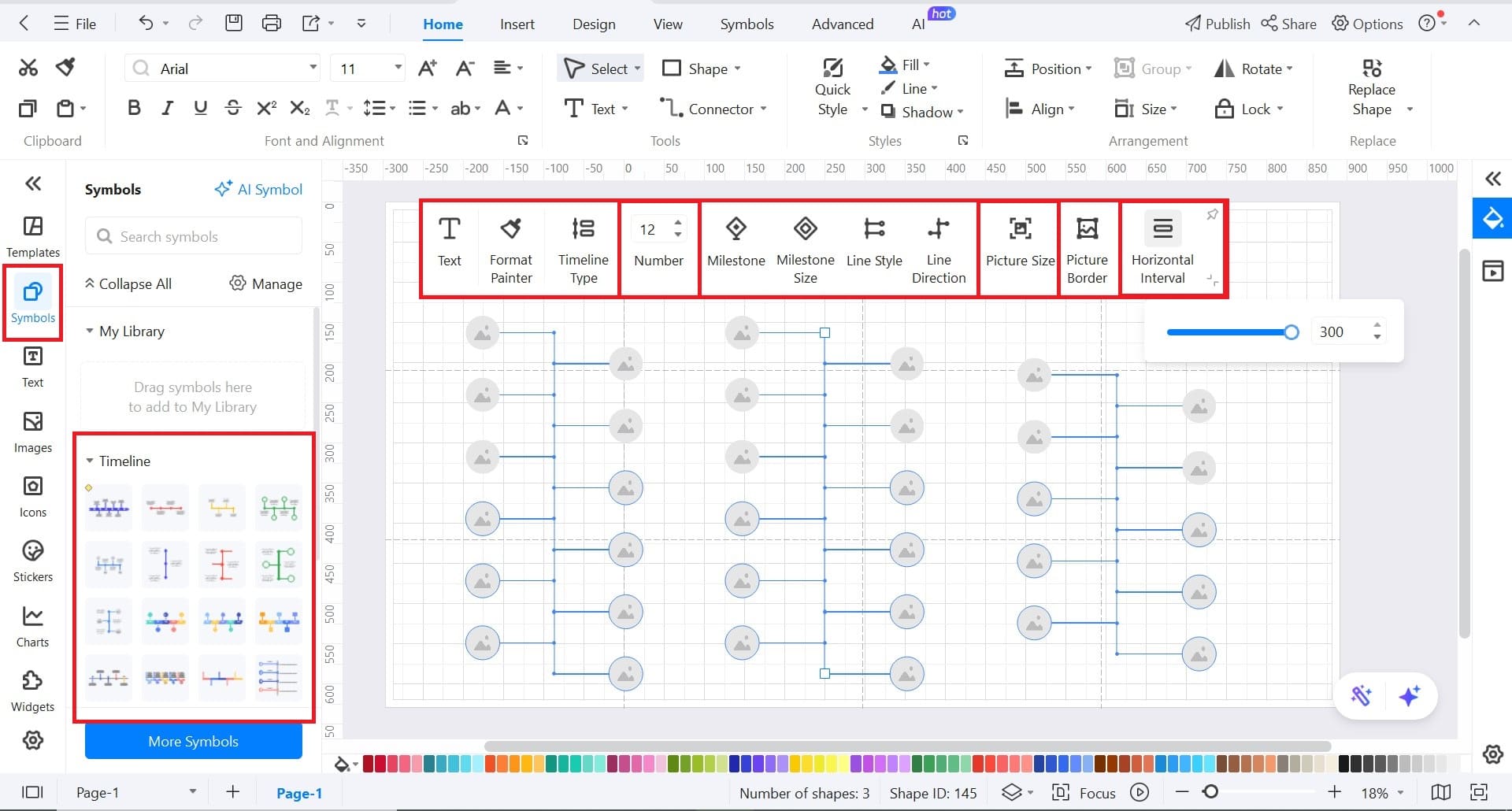
Step4
Personalize the Timeline Double-click near the connectors to add text. Change the timeline color through the quick color bar below. Then add pictures to the picture icons. Ensure you have pre-saved relevant images on your device. Select Insert> Picture > Local Pictures. Simply drag and drop it in the frame.It will fit itself.
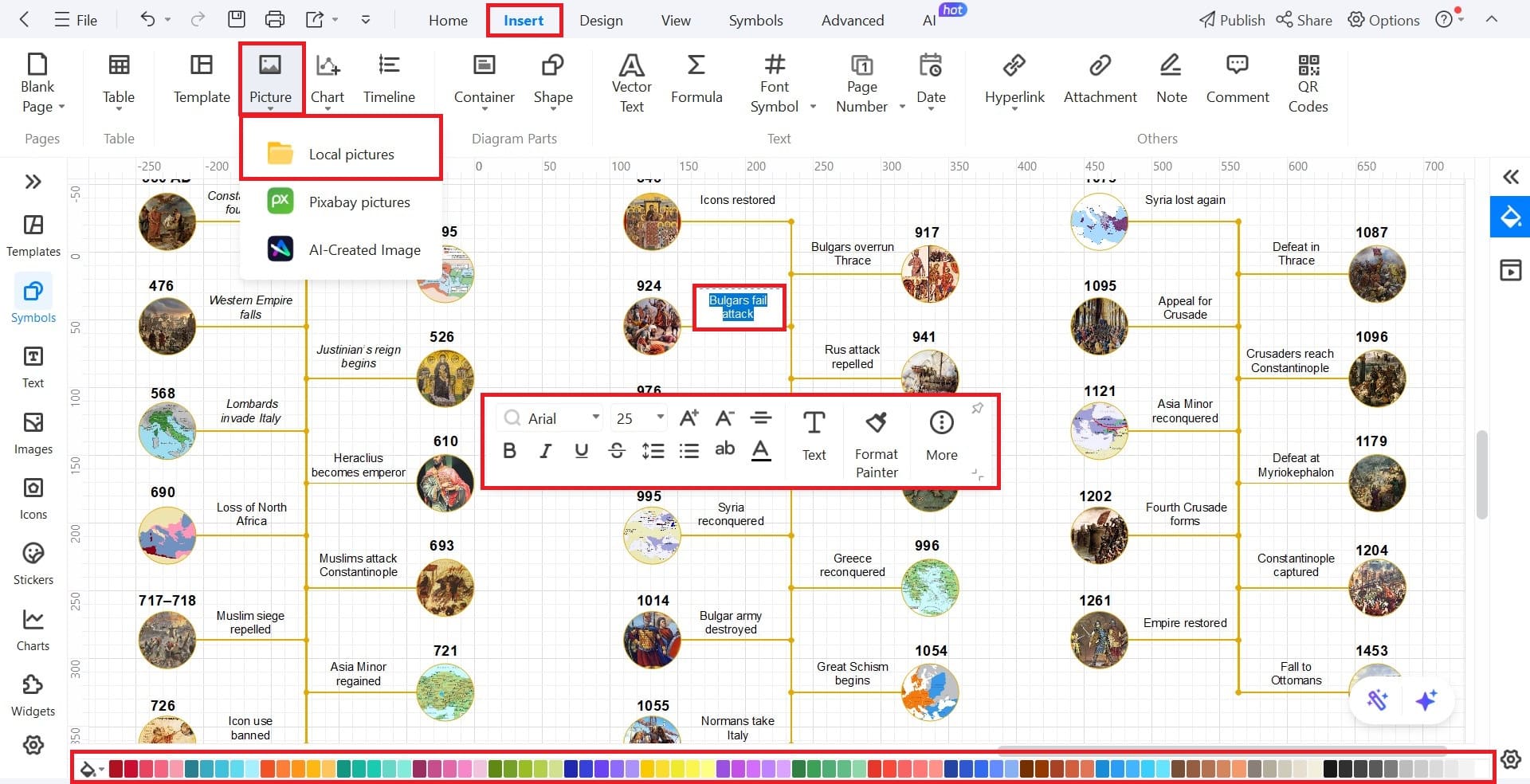
Step5
Add a Background Picture Now time to add a background picture. You can either add one available in the Background Picture section in the Design bar. Or use a saved one using the method mentioned above to add pictures. Select the image and click Send to Back. This will get the image out of your timeline view.
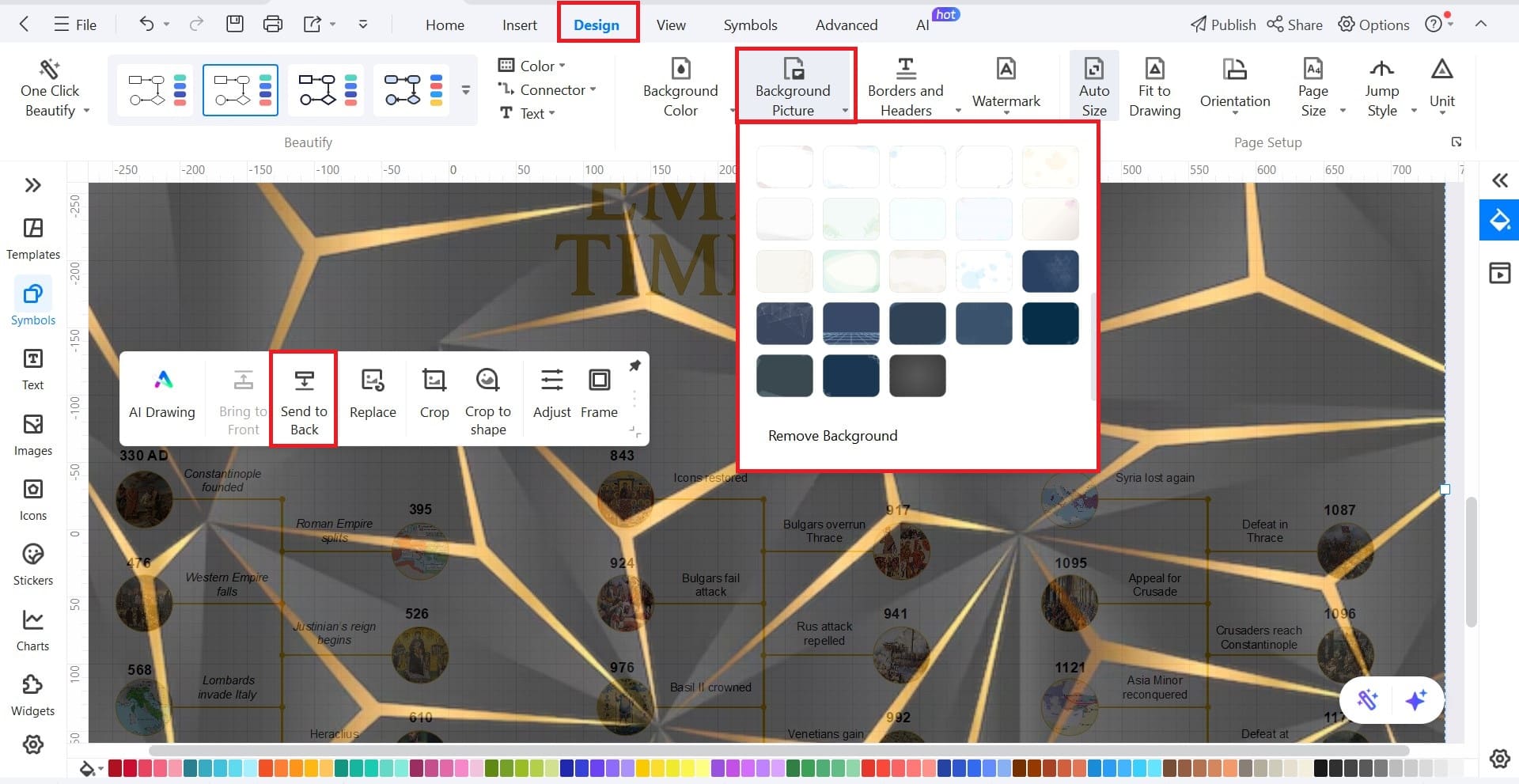
Step6
Export the Timeline To finalize,right-click on the blank canvas area and click Fit to Drawing. And we’re done!Lastly, head to the Export icon. Select your preferred format and click Export. You can choose JPG,PNG, PDF, Word, xlsx, and various other formats from the options.
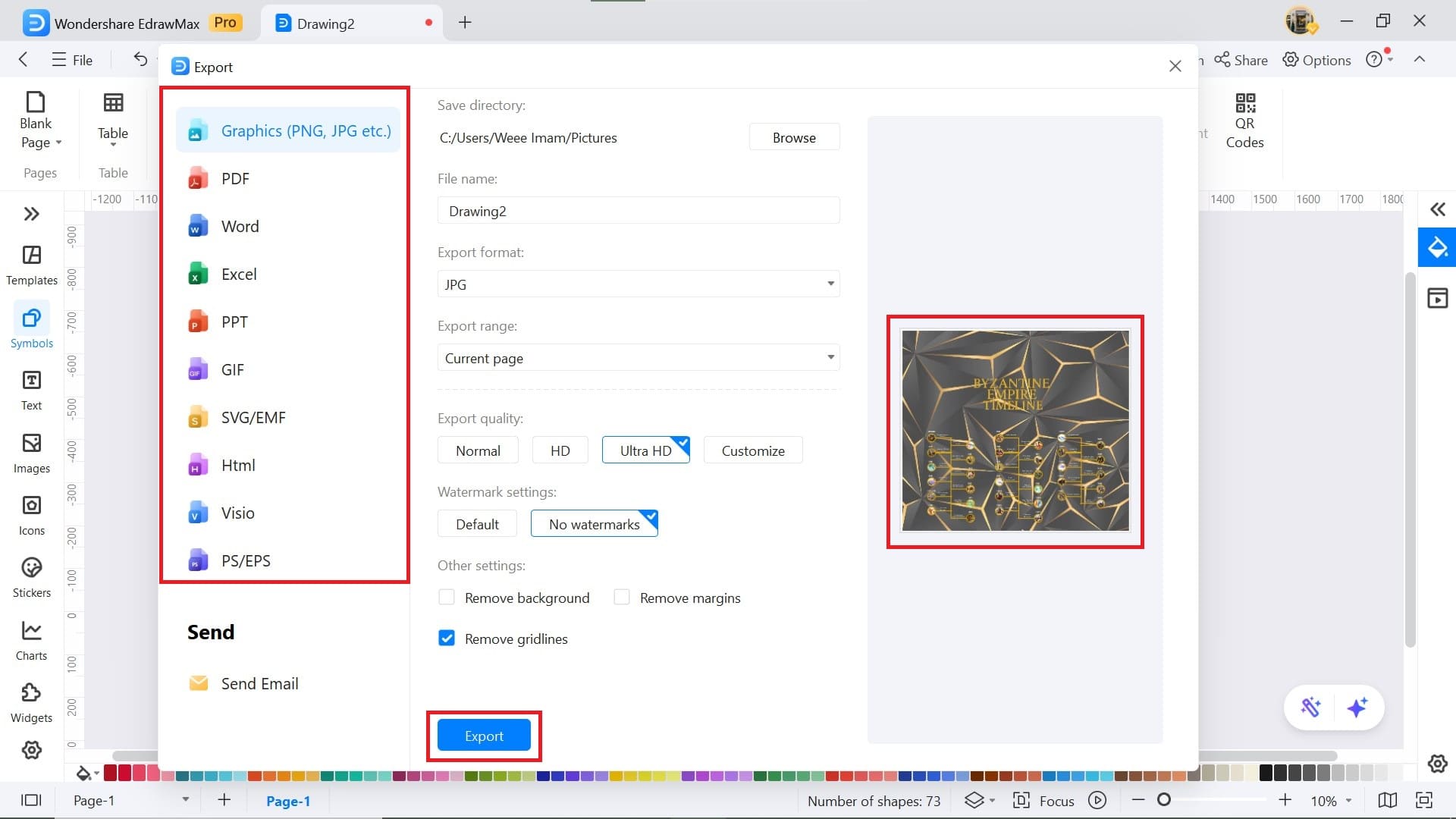
Closing Remarks
It has been 527 years since the Byzantine Empire's final defeat. But it remains a prominent part of our history. Still remembered as the cultural and historical hub of its time. And most importantly, this empire saw the transition from pagan Rome to Christianity. Without which our world would look really different.
To remember, long timelines like this are better. Give EdrawMax a try. It’ll help condense such huge eras into one place. Start out with its free version. See for yourself how big a help this software can be.




